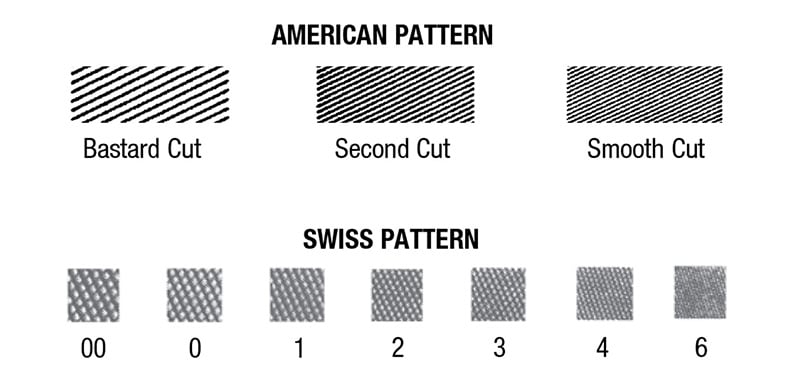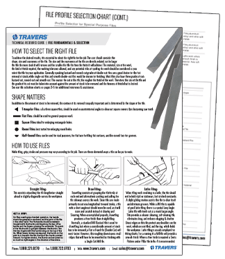Watch this video as we review hand file basics, and walk you through how to determine the right file shape, file length, file pattern and cut that are the best choice for your roughing or finishing application. Utilize tips from tech team expert Kurt Repsher to ensure you select and order the right type of metal file, every time. Pair this video with our latest Hand File Downloadable Guide, complete with profile selector and material/application hand file selection charts. Subscribe to our YouTube Channel to see more invaluable videos like this one!
What File to use, when?
To achieve the desired results, it is essential to select the right file for the job. The user should consider the file shape, file size and coarseness of the file. The size and the coarseness of the file are directly related, so the larger the file, the more stock it will remove. The smaller the file, the finer the finish it will achieve. The material, size of the work, and the kind of finish required, should be considered as you select the right hand file for your application. Generally speaking bastard cut and second-cut grades of double-cut files are a good choice for the fast removal of stock, while single-cut files and smooth double-cut files would be chosen for finishing. Most files also have three grades of cut: bastard-cut, second-cut and smooth-cut. The coarser the cut of the file, the rougher the finish of the work. Therefore, the size of the file and the grade of its cut must be taken into account against the amount of stock to be removed and the fineness of finish that is desired.
selecting coarseness
 The work to be accomplished, whether roughing or finishing, will determine type of teeth and the coarseness required for each application.
The work to be accomplished, whether roughing or finishing, will determine type of teeth and the coarseness required for each application.
- Most American pattern files are available with 3 grades of cut: bastard-cut, second-cut and smooth-cut
- Swiss pattern files are available in seven cuts: No. 00, 0,1, 2, 3, 4, and 6
- The degree of coarseness is greater in longer files, but differences between bastard, second and smooth are proportionate.
Selecting File Length
 File length is determined from point to heel, exclusive of the tang.The required stroke length, type of material, and size of material will help you ascertain the file length necessary for your roughing or finishing application.
File length is determined from point to heel, exclusive of the tang.The required stroke length, type of material, and size of material will help you ascertain the file length necessary for your roughing or finishing application.
ENSURE YOU'RE USING THE right file, EVERY TIME
 While hand files are easy to use, selecting the right file for your roughing or finishing application can sometimes be a challenge. Our File Fundamentals & Selection Guide helps you choose the file that best suits your application, and helps you achieve the required finish.
While hand files are easy to use, selecting the right file for your roughing or finishing application can sometimes be a challenge. Our File Fundamentals & Selection Guide helps you choose the file that best suits your application, and helps you achieve the required finish.
Download your File Fundamentals & Selection Guide and find:
- File Profile Selection Charts
- File Selection Charts Based On Application
- File Selection Charts Based On Material
- File Fundamentals & Basics
- Helpful filing tips from pros and manufacturers



